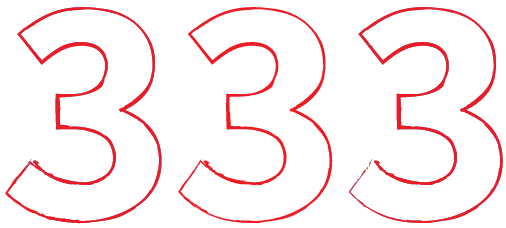Welcome to ComJour 333. This is where you can find links to the weekly response form, readings and assignments.
WEEK 1: Jan. 12-16
What is news? Defining newsworthiness. Types of news stories. AP Style changes. Journalism vs. Public Relations.
Survey form: About you and your news consumption
Ongoing exercise: Show and Tell
In-class exercise: Story choices in journalism vs. PR
Assignment: Preview story (due Jan. 28)
Links for class: Dawn Wall, Snow Fall, How Ebola Roared Back
WEEK 2: Jan. 20-23
Getting the story. The preview story. The next-day story. Interviewing. Choosing and working with sources. Asking the right questions. Taking notes. On the record. Story mapping.
Readings: LA Times, CNN, OC Register
Survey form: AP Style review and current events
Links for class: Dawn Wall video, NYT measles story, event 1 and event 2
★ What to expect when you’re interviewed by AP
WEEK 3: Jan. 26-30
Telling the story. Types of leads/ledes. Nutgrafs. Beats. Aggregation. Understanding world news.
Survey form: Interviewing review and world news preview
In-class exercise: News aggregation/curation
Assignment: Enterprise story (due Feb. 11)
WEEK 4: Feb. 2-6
Quotes and Attribution. Selecting quotations. Writing techniques. Paraphrasing. Fairness. Explaining sources to readers. Attribution on the web.
Readings:
1) Do newspapers ever correct a speaker’s broken English? (Slate)
2) Verbatim: When good people use bad grammar (AJR)
3) Quote, Unquote (WaPo)
4) Latest word on the trail? I take it back (NYT)
Survey form: Dealing with quotations
WEEK 5: Feb. 9-13
Audio storytelling. Why sound matters. Recording techniques. Voicing. Writing for broadcast and radio.
Readings:
1) Brian Williams Offers Clarification About 2003 Iraq Incident (NBC)
2) With an Apology, Brian Williams Digs Himself Deeper in Copter Tale (NYT)
3) War reporters don’t buy Brian Williams’ explanation (CNN)
Survey form: Current events and thinking about audio
In-class exercise: Writing and editing for audio
Assignment: Multimedia story (due Feb. 27)
WEEK 6: Feb. 17-20
Reporting for digital media. Shooting photos and video. Framing. Visual composition. Editing visuals. Showing process.
Readings:
1) What makes a good video story (SPJ)
2) How to best approach a video story (Mastering Multimedia)
3) Four steps to a video story (Columbia Visuals)
Survey form: Audio review and thinking about video
In-class exercise: Visual creativity
In-class exercise: Framing shots scavenger hunt
WEEK 7: Feb. 23-27
Midterms. Digital media troubleshooting techniques and workshopping.
Survey form: Visuals review and WNPA guest publisher-in-residence
WEEK 8: March 2-6
Reporting feature stories. Details in storytelling. Scene and observation. The profile.
Reading links for class:
1) Humans of New York
2) Locked Away (The Inlander)
Survey form: Reviewing multimedia and thinking about details
Optional form: Feedback on the course so far
In-class exercise: Writing scene and observation
WEEK 9: March 9-13
Writing feature stories. Anecdotal and other delayed leads. Story organization and structure. People as characters.
Readings links:
1) March 3: World Press Photo Upholds Controversial Decision (Time)
2) March 4: World Press Photo Revokes Prize (NYT)
Survey form: Current events and review
Assignment: Profile story (due March 25)
Links for class: Lessons from NICAR
Spring Break: March 16-20
WEEK 10: March 23-27
Trends and data. Assessing trend stories. Localizing. Online tools for finding trends and data.
Survey form: Data and trends
In-class exercise: Writing delayed leads
Assignment: Trend/explainer story (April 8)
WEEK 11: March 30-April 3
Social media. Using social media for reporting and promotion. Online ethics and standards.
Survey form: Trend stories and Murrow Symposium prep
Murrow Symposium on April 2. No class. For attendance credit, tweet from a symposium event with the hashtag #murrow40 and then email this tweet to the instructor. (If you do not use Twitter, talk to the instructor ahead of time.)
WEEK 12: April 6-10
Checking the facts. Math for journalists. Backgrounding sources. Skepticism. Specialty reporting.
Readings:
1) Manti Te’o’s Dead Girlfriend Is A Hoax (Deadspin)
2) Manti Te’o in his own words (Sports Illustrated)
3) Grunge: A success story (NYT)
4) Lexicon of Grunge (Museum of Hoaxes)
5) How This Guy Lied His Way Into MSNBC, ABC News, The New York Times and More (Forbes)
Bonus! A history of the NYT Styles section (The Awl)
Links for class:
• Updated link for Sports Illustrated story
• Columbia Journalism School investigation of Rolling Stone
• Interview with the Columbia investigators
• Retracted Rolling Stone story: “A Rape on Campus”
Survey form: When sources don’t tell the truth
Assignment: Final story project (due May 1)
WEEK 13: April 13-17
Law. Public records. FOIA. FERPA. HIPAA. Libel and other laws. Journalists’ rights.
Survey form: FERPA and university public records
WEEK 14: April 20-24
Ethics. Reporting difficult topics. Participatory journalism. Disclosure.
Survey form: Public records review and what’s left this semester
In-class exercise: Editing for headlines and leads
Links for class:
• A Visit to Thrux Lawrence
• Papaya Vintage
• Love and Independence in East Providence
• Born Into This trailer
• Cutest Patrol Pup
WEEK 15: April 27-May 1
Dead Week. Open lab. No class content or assignments. Final project due at 5 p.m. Friday, May 1 8 a.m. Saturday, May 2. Submit text documents to TurnItIn; submit multimedia link here.
Survey form: Open records and multimedia review
Links for class: Nepal landmarks before and after, TIME Instagram photographer, TIME cover
WEEK 16: May 4-8
Finals. No final for this course. All revised papers for Assignment 2 and Assignment 5 due by email at 11:59 p.m. Monday, May 4.
Optional survey: Anonymous course review and feedback
